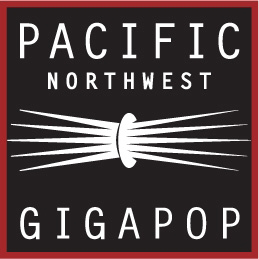CENIC Recognizes Pacific Northwest Gigapop for Efforts that Expand Research and Education Networking in North America and Beyond
CENIC has selected the Pacific Northwest Gigapop (PNWGP) to receive the 2024 Innovations in Networking Award for Network Partner in recognition of its outstanding achievements in high-bandwidth networking that have enriched and expanded the global advanced research and education (R&E) network ecosystem. The CENIC Innovations in Networking Awards recognize exemplary people, projects, and organizations that leverage high-bandwidth networking.
The leadership of PNWGP Executive Director Amy Philipson, Managing Director Jonah Keough, and Pacific Wave Principal Architect David Sinn has been instrumental in the organization’s success. The PNWGP is renowned for its expertise in connecting diverse institutions, fostering collaborative environments, and driving technological innovation. Through their work, PNWGP has effectively bridged geographic and institutional boundaries, enabling researchers and educators to access and share vast resources seamlessly.
“The impact of their contributions extends far beyond the immediate network infrastructure. It lies in the empowerment of communities, researchers, and educators to achieve their fullest potential in a digitally connected world,” stated Louis Fox, CENIC’s Chief Executive Officer. “We are truly grateful for PNWGP’s partnership and look forward to continuing our collaborative efforts to push the boundaries of what is possible in networking and research.”
Western Regional Network
National and Global Impact: the Western Regional Network and the Pacific Wave Internet Exchange
The Western Regional Network (WRN) is a collaboration of CENIC and PNWGP, the Front Range GigaPoP (FRGP) in Colorado and Wyoming, the University of New Mexico on behalf of the State of New Mexico, and the University of Hawai'i. It provides advanced, robust high-speed networking for research, education, and related uses leveraging Internet2’s optical infrastructure.
WRN serves institutions in Alaska, California, Colorado, Hawaii, Idaho, Montana, New Mexico, Oregon, Washington, and Wyoming, and extends the network's resiliency through connections at StarLight in Chicago. The extensive infrastructure resulting from this partnership and the resulting user community greatly enables collaborations among top researchers and educators at institutions in all these states.
”This collaboration has brought networking resources to a very large geography in the western US in an effective, cost-efficient way,” said PNWGP Executive Director Amy Philipson. “It’s a pretty big deal. It allows all members to leverage one another to create a more robust high-performance network.”
Another example of PNWGP’s investment in R&E partnerships around the world is Pacific Wave, the world’s first distributed open Internet Exchange. A joint project between PNWGP and CENIC that began in 2004, Pacific Wave provides high-performance Internet connectivity within the US and internationally throughout the Pacific Rim. With locations in Los Angeles, Sunnyvale, and Seattle, Pacific Wave vastly improved cost-effective access for research and education networks around the Pacific and currently provides peering services to R&E networks in over 30 countries.
Through its connections to Internet2 and other US-based R&E Exchanges (StarLight, AMPATH, MANLAN, and WIX), Pacific Wave also enables researchers to connect to colleagues, data, and scientific instruments in other regions of the world, including global scale instruments like the Large Hadron Collider and arrays of radio telescopes in Europe, Central and South America, and Africa.
“Pacific Wave is a fundamental part of the world’s research and education infrastructure, and it continues to contribute to the success of multiple large-scale scientific R&E endeavors,” said PNWGP Managing Director Jonah Keough. “It is critical infrastructure for high-performance access to scientific instruments and large-scale data sources and repositories.”
With funding from the National Science Foundation’s International Research and Education Network Connections (IRNC) program, Pacific Wave enables large-scale scientific workflows to accelerate discovery in all areas of science and engineering – high-energy physics, earth sciences, astronomy and astrophysics, biology and biomedical engineering, as well as scalable visualization, virtual reality, machine learning, and artificial intelligence.
Pacific Wave
PNWGP, CENIC,and Internet2 Operate a Shared West Coast Infrastructure
In 2017, CENIC, PNWGP, and Internet2 developed a new operational model based on their overlapping fiber and equipment footprint along the US west coast. The resulting shared infrastructure enables all three organizations to provide services quickly and economically to R&E communities around the Pacific Rim and beyond more effectively than if they had pursued their deployments individually.
Thanks to the R&E network collaborations that PNWGP has helped create, precious resources like vast telescope arrays, seismic and environmental sensor networks, petascale data sets on everything from archaeology to genetics and medical imaging, hyper-high-resolution displays, and most importantly colleagues are made available to researchers and educators all over the world, facilitating collaborations that would once have resided in the realm of science fiction.


